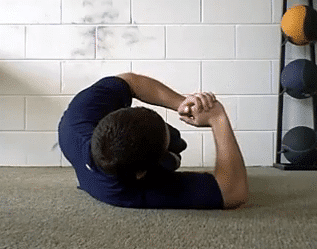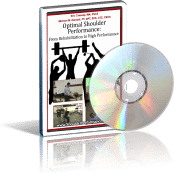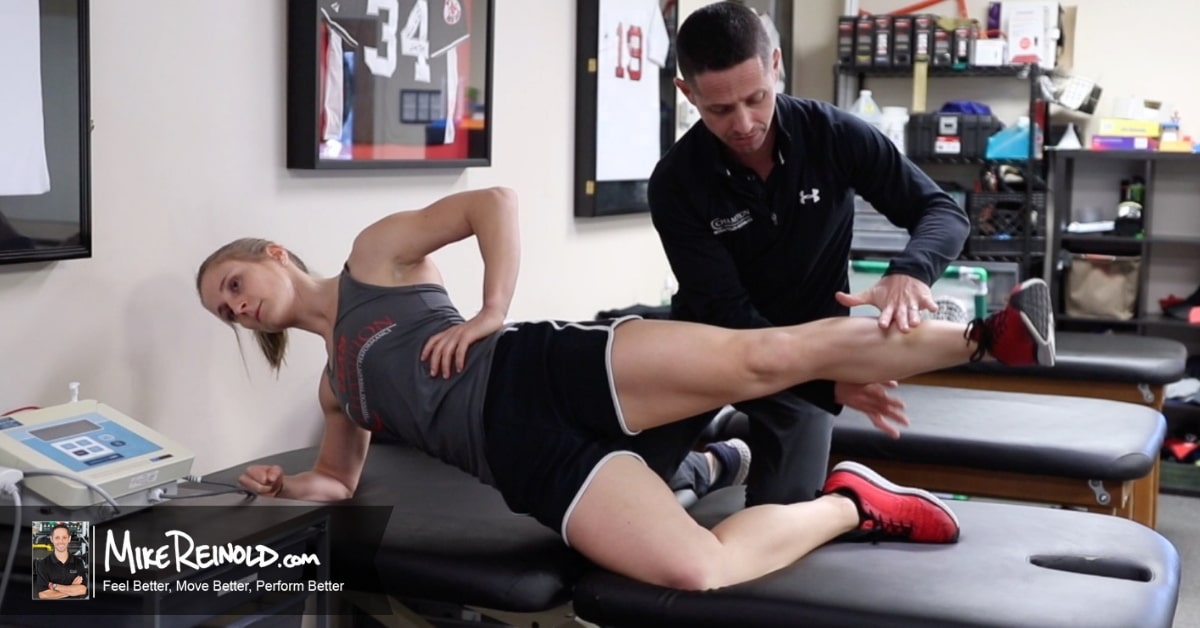 The sleeper stretch is one of those exercises that unfortunately gets abused. As I have said, I don’t really like the sleeper stretch and I do not use it often – go back and read why I don’t use the sleeper stretch. The stretch is probably overused and often times used used so aggressively that it may actually be doing more harm than benefit.
The sleeper stretch is one of those exercises that unfortunately gets abused. As I have said, I don’t really like the sleeper stretch and I do not use it often – go back and read why I don’t use the sleeper stretch. The stretch is probably overused and often times used used so aggressively that it may actually be doing more harm than benefit.
But I do see the need for the sleeper stretch for certain individuals. Just like everything else, there is a time and a place to use it, but when something is very popular, it probably gets overused. Plus, the sleeper stretch has been shown to be effective in restoring posterior shoulder tightness in overhead athletes. So there is definitely some validity to it’s use, especially if done safely, but more on this below.
Who I Think Will Benefit from the Sleeper Stretch
There are a couple of groups of people that I think are very appropriate for the sleeper stretch:
1. People that have shoulder tightness
We talked about how the sleeper stretch causes strain on the posterior capsule. That is great if you are trying to stretch the posterior capsule. That is also great if you have carefully assessed the person and found them to have posterior capsule tightness. But you have to assess and determine that the posterior capsule is tight. Don’t just assume that if they have decreased shoulder internal rotation that their posterior capsule is tight, there are many other structures that may be involved including the muscles and boney tissue.
You can not assume that if someone has a loss of internal rotation that their posterior capsule is tight.
Do you know what two types of people that I would consider is this group? People with adhesive capsulitis (or frozen shoulder) and people that had shoulder surgery and lost motion. These groups probably are not athletes. Sure, there are always exceptions, that is why we have to carefully assess.
For athletes, I actually have found that tightness of the shoulder often comes from overuse and soft tissue restrictions. Work on the posterior shoulder musculature and their tightness goes away, no aggressive sleeper stretch needed.
2. Athletes Without Help
There is a group of athletes that could benefit from the sleeper stretch, those that do not have a skilled person working with them. This mostly applies to the young athlete, such as the Little League pitcher. Any form of stretching is probably better than no stretching, and the sleeper stretch is an effective stretch that you can perform by your self when done correctly. But again, realize that there are negatives to this stretch, so again, go back and read my article on why I don’t like the sleeper stretch.
How to Perform the Sleeper Stretch
OK, so you want to perform the sleeper stretch. Here is how I would recommend that you perform the sleeper stretch. Just my opinion and I am sure that some may disagree, so take this with a grain of salt. Here is a video demonstrating what I feel is the proper form for performing the sleeper stretch followed by my 3 keys to performing the sleeper stretch correctly:
3 Keys to Performing the Sleeper Stretch Correctly
- Scapula position. Roll onto your side and make sure that your scapula is retracted, meaning that you do not want to lay flat on your scapula with your shoulder rounded, you want to lay mostly on your rib cage and the outside border of your scapula. I usually roll forward towards my arm to get my scapula off the ground and then roll back.
- Shoulder position. Next, make sure that your body is not straight up and down. You actually want to roll backwards so you body is facing upward at close to a 45 degree angle. This will get your shoulder out of the sagittal plane, which places too much strain on the posterior capsule, and into the scapular plane that stretches more of the posterior musculature. I am also trying to keep my head in neutral with my body position. I would normal use a yoga block or something similar to relax my head but it would have blocked the camera.
- Intensity. Lastly, you want to gently push down until you feel a MILD stretch and hold for 30 seconds. Most people will push WAY to hard. You do not want to feel anything in the front of your shoulder. The goal is to feel a mild stretch in the back of your shoulder and to hold this position. Do this gently for a few reps and you will see improvement without cranking on the arm aggressively. Notice the amount of IR that I am achieving. It’s not a large movement but as you can see it is close to 45 degrees of internal rotation, which is plenty. Your hand is not supposed to touch the ground, that is WAY too much motion.
That last point could be the most important and what I likely see abused the most, the intensity of the stretch.
If you do not feel any stretch at all before starting to feel anterior shoulder pain, stop, the sleeper stretch is not for you.
You are now putting too much stress on the shoulder joint and not achieving the posterior shoulder stretch we are looking for with the sleeper stretch. Remember above when I referred to a study that showed that the sleeper stretch was effective in restoring posterior shoulder mobility in overhead athletes?
Well, interesting enough, the sleeper stretch did not change motion in healthy, non-overhead athletes. So if you don’t have posterior shoulder tightness, you don’t need the sleeper stretch and may just irritate your shoulder.

In summary, if you need to perform the sleeper stretch, I feel that there is a safer way to perform the stretch that minimizes you chance of inflaming the shoulder joint. But I still feel like there are ways to achieve the same results without having to be aggressive with the sleeper stretch. Click the link below to read about some alternatives that I feel are pretty effective:
- Alternatives to the sleeper stretch
- And don’t forget to go back and read why I don’t like the sleeper stretch
Regardless, if you are going to try this, at least understand what I consider the correct way to perform the sleeper stretch.




